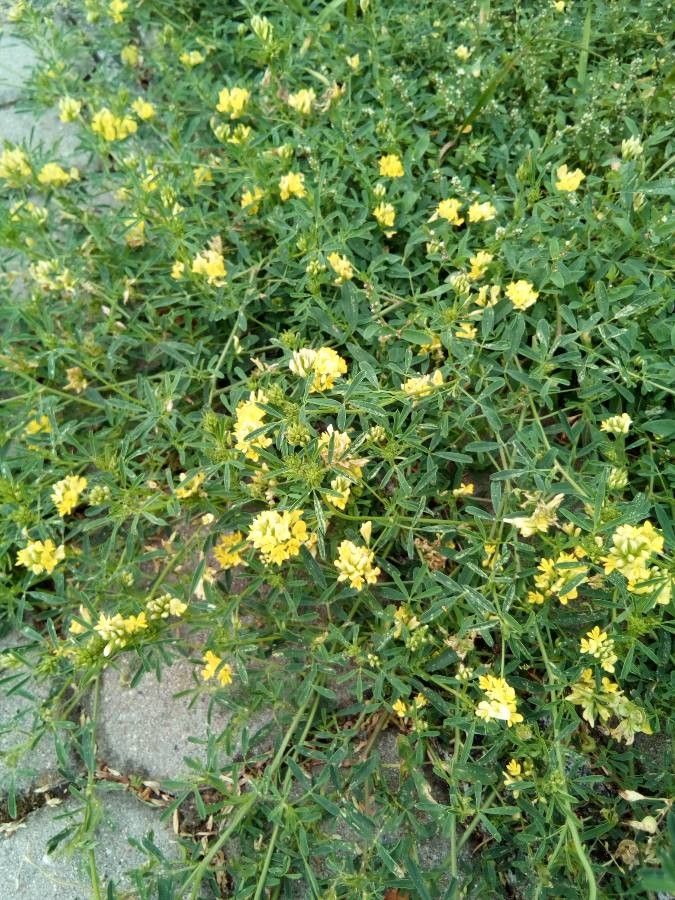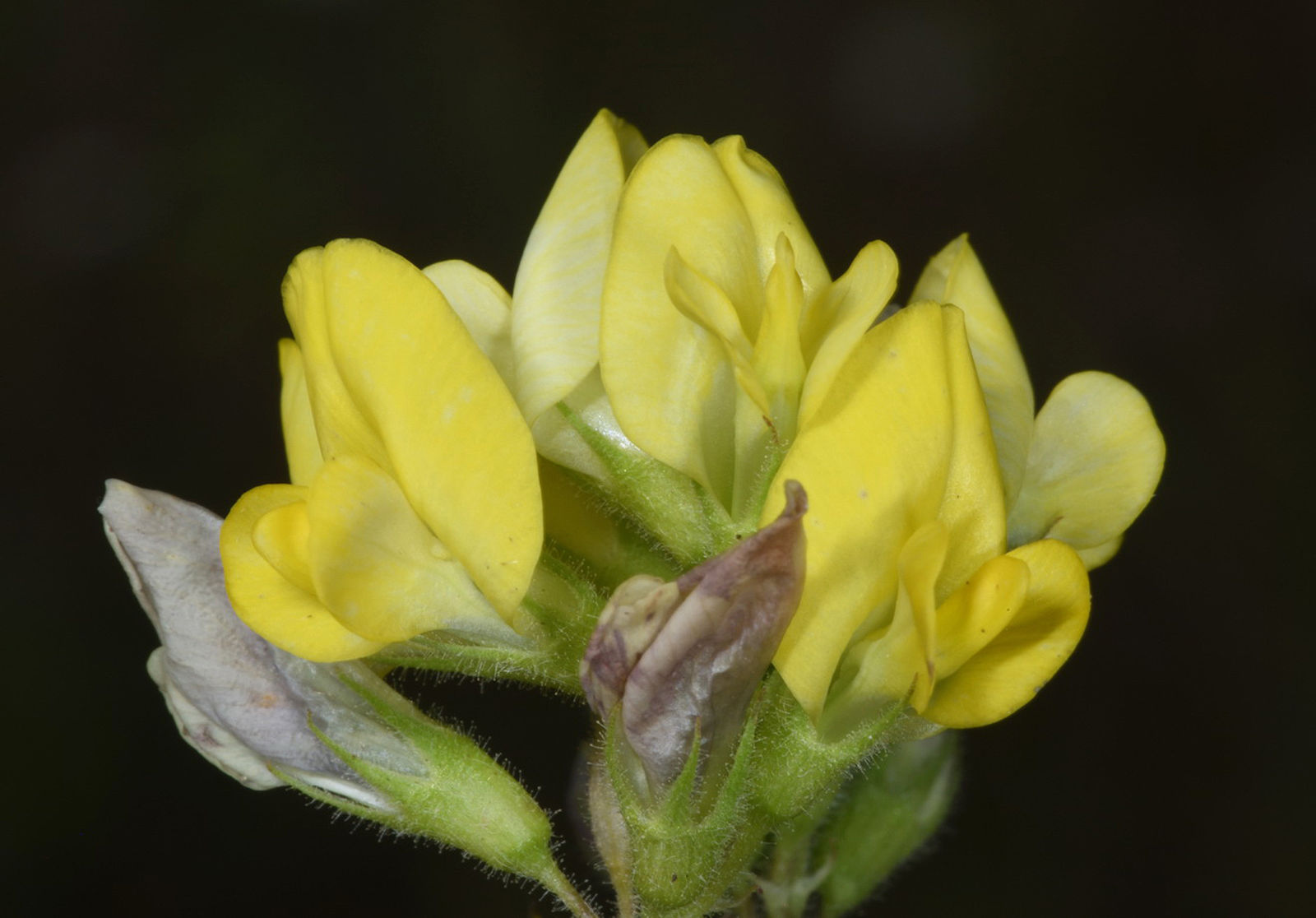Sickle Medick
medicago falcata
Also known as: ["Sickle alfalfa","Yellow alfalfa"]
Overview
A perennial legume native to Europe and Asia, valued for its hardiness and nitrogen-fixing capabilities.
Benefits & Perks
["drought tolerant","shade tolerant","wildlife attractant (bees, butterflies, birds)"]
Botanical Classification
| Phylum: | Magnoliophyta |
| Class: | Magnoliopsida |
| Order: | Fabales |
| Family: | Fabaceae |
| Genus: | Medicago |
| Botanical Name: | Medicago falcata |
Plant Characteristics
Basic Information
- Category: Herbs & Weeds
- Suitable Location: open fields, meadows, or as a component of pasture mixtures
- Suitable For:
- Is Weed: No
- Allergenicity: low
Environmental Needs
- Climate: {"temperatureRange":"–30–40°C"}
- Hardiness: {"zones":"3–9"}
- Misting: rarely required, only if ambient humidity is very low
- Drainage: Fast-draining to prevent root rot.
- Soil Type: Well-draining loam or sandy soil with organic matter.
Maintenance Level
- Maintenance Level: low
- Toughness Level: high
- Pruning Frequency: As needed; after flowering or in late winter/early spring.
- Pruning Intensity: Light to moderate; avoid heavy pruning unless necessary.
Care Details
Ideal Sunlight Coverage:
Full sun (6–8 hours/day); tolerates partial shade but may produce fewer flowers.
Sunlight Tolerance Tips:
Acclimate plants gradually to intense sunlight; protect from harsh afternoon sun in hot climates; ensure adequate airflow to prevent fungal issues.
Care Requirements
Care Difficulty
easyeasy
Sunlight
full sun
Rotate plants for even light exposure; use shade cloth in extreme heat; avoid direct sun on young seedlings.
Watering
every 7–10 days during active growth, reduce in winter
Water thoroughly but infrequently; ensure good drainage; avoid wetting foliage.
Soil
well-drained, loamy soil with moderate fertility
pH: Slightly acidic to neutral (pH 6.0–7.0).
Ensure good aeration; avoid waterlogging; enrich with organic matter annually.
Temperature
Prefers 60–85°F (15–29°C); hardy to USDA zones 3–9.
Protect from frost; avoid sudden temperature swings; ensure good air circulation.
Fertilizing
every 4–6 weeks during growing season, none in winter
Fertilize lightly; avoid over-fertilization; water before and after feeding.
Propagation
Methods
Seed propagation is most common; can also be propagated by division in early spring.
Step-by-Step Propagation Guide
- Sow seeds 1/4 inch deep.
- Keep moist.
- Thin seedlings to desired spacing.
- Transplant when established.
Best Time: Spring or early autumn when temperatures are mild.
Environment
Warm, humid conditions with indirect light for cuttings; full sun for seedlings.
Medium
Well-draining seed starting mix or sandy loam.
Hormone
Not typically required for seeds; rooting hormone may help for cuttings.
Timeline
Seeds germinate in 1–3 weeks; plants establish in 1–2 months.
Tools Needed
Seed trays, soil, water spray bottle, labels.
Quick Tips
Sow seeds in groups; thin to strongest seedlings; harden off before planting outdoors.
Pruning & Repotting
Pruning Guide
Method
Snip dead or overgrown stems at the base; shape lightly to encourage bushiness.
Pruning Plan
Minimal pruning needed; remove dead or damaged stems to maintain health.
Tools
Hand pruners, clean scissors.
Checklist
Disinfect tools; prune dead growth; shape lightly; compost clippings.
Repotting Guide
Best Season
Early spring before new growth begins.
Pot Size
One size up; ensure pot has drainage holes.
Method
Gently remove plant; trim roots if crowded; repot in fresh, well-draining soil; water lightly.
Suggestions
Generally not required unless grown in containers; repot every 2–3 years to refresh soil.
Checklist
Check root health; use fresh soil; ensure proper drainage; water sparingly post-repotting.
Advanced Care Tips
Watering Mastery
Watering Checklist
Check soil moisture; water deeply; ensure drainage; avoid wetting leaves.
How to Apply Water Properly
Water at the base of the plant, ensuring moisture reaches the root zone; allow excess water to drain away; water early in the day to minimize evaporation.
Watering Schedule Tips
Water deeply once the top inch of soil is dry; reduce frequency in winter to prevent root rot.
Soil Improvement
Add compost or aged manure; incorporate perlite or sand for drainage; avoid heavy clay soils.
Temperature Stress Management
Signs of Temperature Issues
Wilting, yellowing leaves, or stunted growth in extreme heat or cold.
Cold Stress
Leaves may turn purple or brown; growth slows; roots may become damaged in prolonged freezing.
Solution: Mulch heavily in winter; plant in sheltered locations; avoid overwatering before cold snaps.
Hot Stress
Leaves may scorch, wilt, or drop; flowering may be reduced.
Solution: Provide afternoon shade; increase watering; use reflective mulch to reduce soil temperature.
Fertilizing Guide
Fertilizing Checklist
Check soil nutrients; use diluted fertilizer; apply during active growth.
Fertilizing Method
Use a balanced, slow-release fertilizer in early spring; avoid high-nitrogen formulas; reduce or stop fertilizing in late summer/autumn.
Common Problems & Solutions
Toxicity Warning
Cats
Non-toxicMedicago falcata is not considered toxic to cats. It is generally safe for cats to consume in small quantities, though it is not a typical part of their diet.
⚡ Toxic If:
Generally non-toxic to cats
Dogs
Non-toxicMedicago falcata is not considered toxic to dogs. It is commonly used as forage and is generally safe for dogs to consume in small quantities.
⚡ Toxic If:
Generally non-toxic to dogs
Humans
Non-toxicMedicago falcata, commonly known as yellow alfalfa, is not considered toxic to humans under normal circumstances. It is often used as forage for livestock and is generally safe for human consumption in moderate amounts.
⚡ Toxic If:
Generally non-toxic to humans
Frequently Asked Questions
Q: Is Medicago falcata edible?
A: Yes, it is often used as forage for livestock and can be consumed by humans in moderation.
Q: Does Medicago falcata attract wildlife?
A: Yes, it is highly attractive to bees, butterflies, and other pollinators.
Q: How does Medicago falcata benefit soil?
A: It is a nitrogen-fixing plant, improving soil fertility naturally.
Quick Reference
| Family: | Fabaceae |
| Care: | easy |
| Light: | full sun |
| Water: | every 7–10 days during activ |
Get Expert Care Tips
Download the Plantious app for personalized care reminders and plant identification!
Google Play App Store






